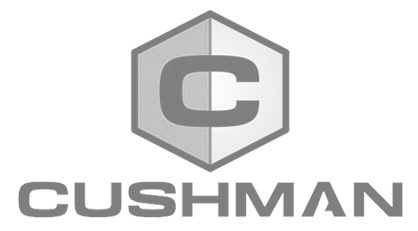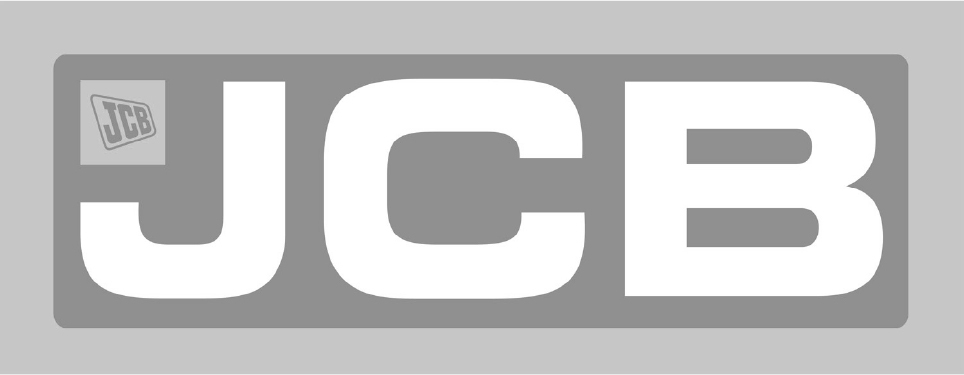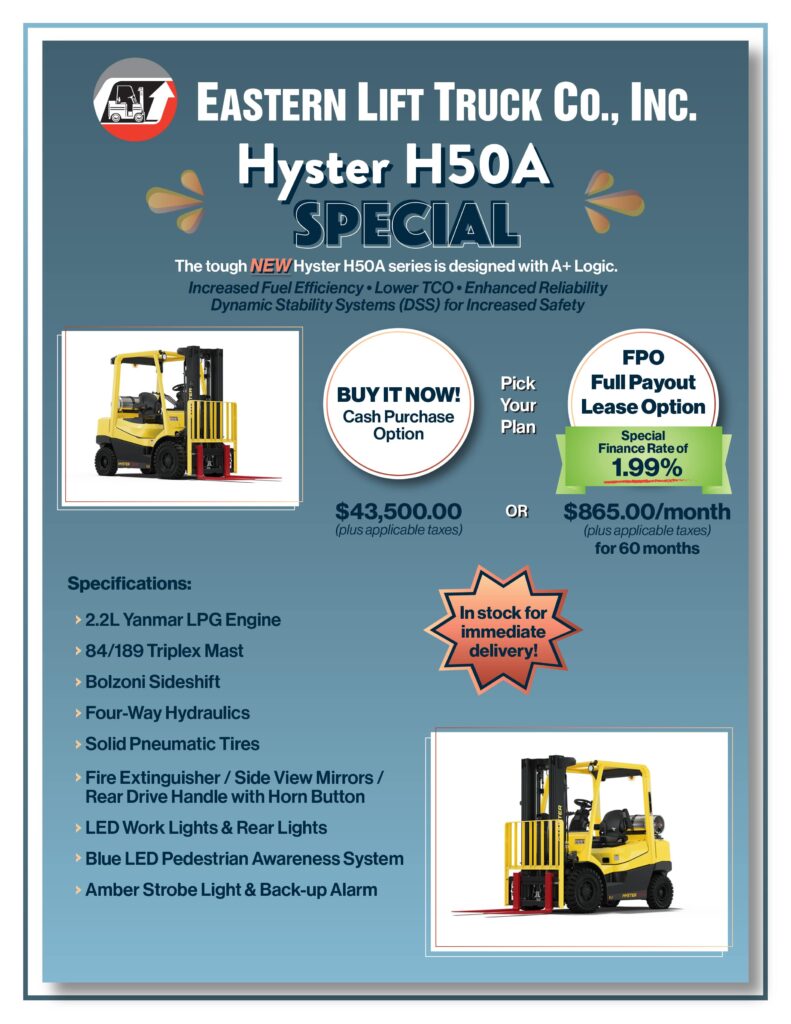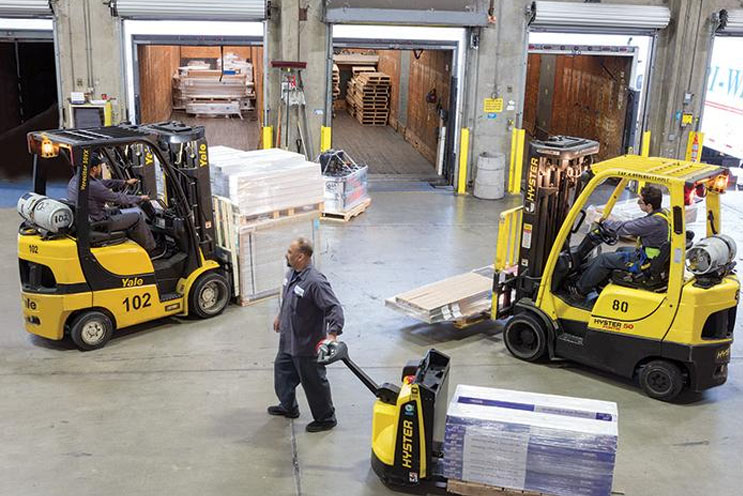
Forklifts are critical components of many projects, and they are also potentially dangerous pieces of heavy equipment. In 2022, forklifts were related to 73 workplace deaths and nearly 25,000 Days Away From Work, Job Restriction or Transfer (DART) cases. Transportation incidents were the leading cause of all incidents.
Protect your team, pedestrians and machinery with these forklift operator safety tips.
1. Have a Plan for Operation
Take time to create an operation plan before you start the forklift. This is the opportunity to map your route and study the terrain. Keep these tips in mind:
- Walk the route first to identify possible obstacles like clutter, heavy pedestrian traffic or uneven terrain.
- Note where all turns and grades are, and plan a path that keeps you from turning on those grades — this will help you avoid tip-overs.
- Secure all dockboards or bridgeplates before driving the forklift. Note their capacities and compare them to your machine’s weight and load rating.
- Know your facility’s emergency procedures, including what to do in a tip-over.
Remember, only individuals 18 or over with the proper training and certifications are permitted to operate a forklift — it’s federal law.
2. Conduct Preoperation Inspections
The Occupational Safety and Health Administration (OSHA) requires facilities to examine all forklifts at least once per day while in service, including after each shift if you work in a 24/7 facility. You can find several inspection checklists on their website, but your prestart check should include the following at a minimum:
- Checking the oil, water and hydraulic fuel levels
- Noting the forks’ condition, including the retaining pin and heel
- Identifying leaks, cracks and other defects in the hydraulic hoses and mast chains
- Measuring tire pressure and noting any cuts or holes
- Ensuring all decals, plates and operator manuals are easily accessible and legible
- Checking for grease or clutter in the operator compartment
- Testing the seatbelt and other safety devices
- Cleaning windows and windshields to ensure optimal visibility
- Making model-specific inspections like visually inspecting cables for fraying or noting the engine oil status
Remove any forklift that needs repairing or is otherwise unsafe from operation and report your findings to a supervisor.
3. Maintain Clear Visibility
Operators should have total visibility at all times when using a forklift. OSHA recommends all forklifts have working headlights if the lighting is less than two lumens per square foot or when working outside or at night. Always drive slowly, especially when entering and exiting buildings — the switch from a darkened warehouse to a bright, sunny day can cause temporary blindness. Use your horn to signal to co-workers and pedestrians when your visibility is limited.
4. Wear Your Seatbelt
Wearing a seatbelt is one of the most essential safety tips for lift truck operators — if your machine starts to topple, your belt will keep you in place and reduce your chance of falling from the forklift and getting pinned or crushed.
5. Monitor Your Speed and Load Capacity
Keep constant tabs on your speed, especially when on grades, while taking turns and in heavily trafficked areas. Adjust your speed to accommodate your load. Note your forklift’s weight capacity before operating, and never use the equipment when overloaded. This can cause toppling and put premature wear on your forklift.
6. Eliminate Distractions
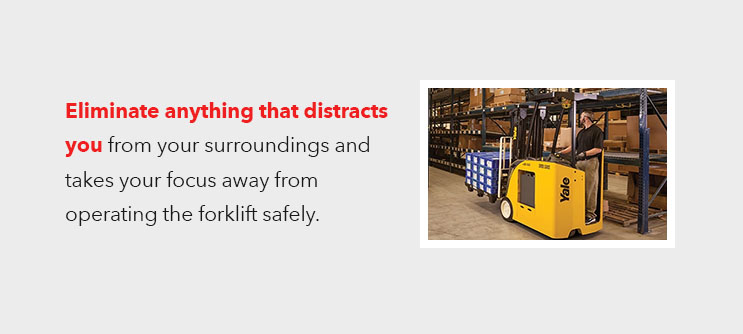
Eliminate anything that distracts you from your surroundings and takes your focus away from operating the forklift safely. This includes listening to loud music, talking with a passenger or using your cell phone. As a reminder, OSHA says all unauthorized personnel are prohibited from riding on a forklift. Never transport co-workers or pedestrians on the tines.
7. Obey All Signage and Traffic Rules
Obey your facility’s posted signage and all relevant traffic rules, especially if you’re operating in a public place. Some things to be aware of include:
- The speed limit for machinery.
- Construction zone limitations.
- The location of sidewalks and crosswalks.
- Weight ratings for different terrains and interior surfaces.
- The presence of any flammable or explosive items.
- The location of power lines and underground pipes.
8. Scan Surroundings Constantly
Watch your surroundings closely while operating a forklift. Check all mirrors and scan your visual field, especially when entering or exiting doorways, aisles or roadways. Look and listen for emergency personnel, and always give pedestrians the right of way to ensure their safety.
9. Communicate With Others
One of the most important safety tips for forklift operators is to keep a constant open line of communication with your team using your radio, horns and hand signals. This keeps you informed about any changes to your route or any oncoming obstacles.
While OSHA has a list of standard hand signals for forklift operation, they often vary between facilities and operations. Familiarize yourself with your team’s motions and take time to practice and recognize the ones for:
- General and emergency stops.
- Raising and lowering booms or tines.
- Moving slowly.
- Lowering or raising the hoist.
- Swinging the boom in a specific direction.
10. Know the Terrain
Study the terrain before beginning your forklift route. Note areas of softness, unevenness, ramps, declines or inclines. Mark off the edges to keep a safe distance from them, and have wheel blocks ready in case you have to park on a slope.
This is also a good time to confirm you’re using the right tires for your project’s needs — for example, air pneumatic tires are ideal for uneven terrain, while load wheels are perfect for indoor warehouses.
11. Be Predictable
Predictability is your friend while operating a forklift. Stick to the planned route, and avoid making any sudden movements. This includes accelerating or breaking abruptly or braking and making sharp turns. Never back up without sounding your horn and following all protocols for hand motions and radio signals. Never assume the path is clear — always confirm with your own eyes, your spotter and nearby personnel.
12. Attend Regular Training
As machinery evolves and workplace regulations adapt, so should your education. Stay informed about the latest best practices for forklift operation, including updated hand signals or signage, and always take time to train on a new machine before operating it for the first time.
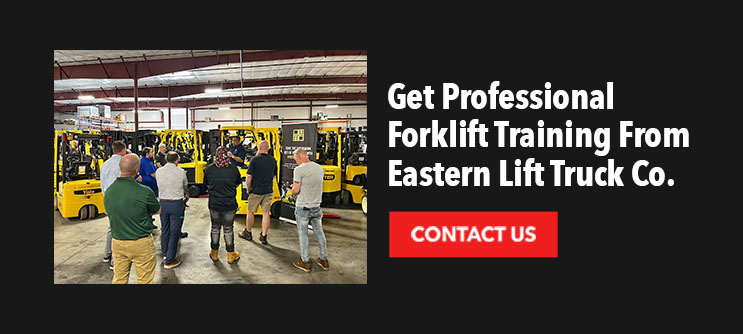
Get Professional Forklift Training From Eastern Lift Truck Co.
Eastern Lift Truck Co. is a family-owned business that provides new, used and rental equipment and warehouse products for facilities across the Mid-Atlantic region. As part of our commitment to improving the material handling industry, we offer customizable on-site facility and safety training programs for classes I-VI forklift operation. Every training session is backed by OSHA-compliant presentations, demonstrations, forklift driver safety tips and hands-on work so your team can stay current on the safest operating practices. We also offer bilingual support for Spanish speakers.
Reach out to a member of our team to get started!









